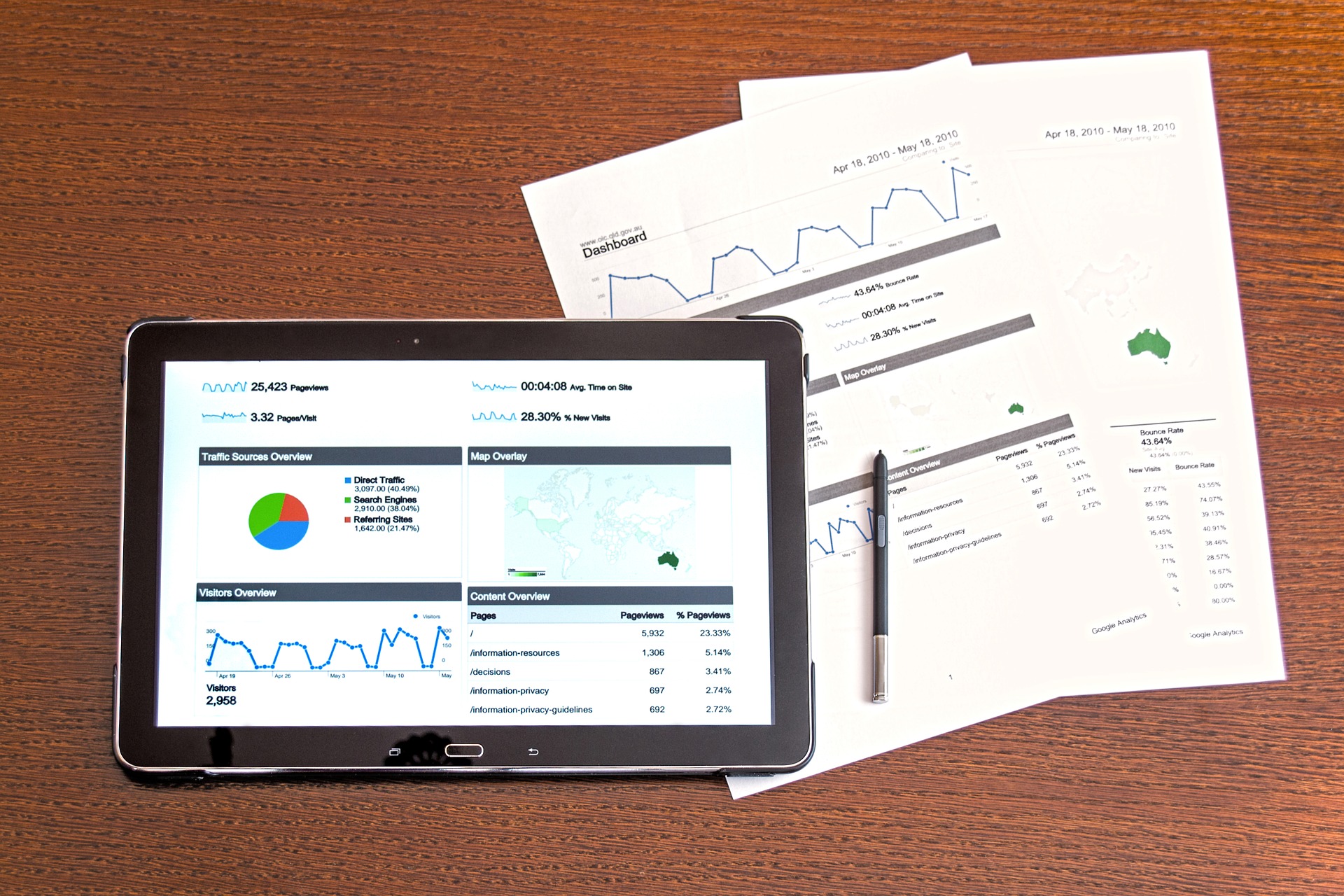Quantify Your Results: The 14 Most Important SEO Metrics
Many SEOs are always uncertain, particularly those new to the competition. They work for weeks or months, but it is tough to see whether the results are worth their time.
Finally, they (possibly you) understand that it is not feasible to evaluate whether all the job you have accomplished is worth it or not without some manner of monitoring the outcomes.
So you begin to follow a single measurement, such as keyword rankings diligently. A new question arises; however: the results of your work cannot be described by a given metric.
Unless you track each of your keywords, rankings for keywords are just a sign of the growing application power of your domain. Search congestion can sometimes increase as ranking decline or vice versa.
Multiple metrics should be tracked. You may read these findings relate to the measurements as the key performance indicators (KPIs) if you present these outcomes to a group. Metrics or KPIs are difficult figures from your information on your site. The majority of this information comes from your selection of analytics instrument, be it your fundamental Google Analytics or a more sophisticated tool like KISSmetrics.
This paper presents 14 of the significant metrics of SEO. You can choose the parameters that you include (if not all) in your periodic documentation. Finally, you need to remember that most of these measures are just signs of your success–not accurate results.
Organic congestion, for instance, generally increases exponentially. In the first month after you do some particular job, an additional 100 tourists could be worth thousands. We usually use metrics as safety and development indices for your site.
1. Keyword rankings: know where your traffic is coming from
There is no ideal manner to monitor your google engine power in its entirety, but some measurements are excellent. You can use keyword ratings to evaluate particular conditions for which you attempt to qualify. They can also assist you in determining whether you are trying to overrun your contest with adequate keywords. There are also, however, some quite significant constraints. I once communicated, for instance, that 91% of fast google data in Sprout was from long-dose searching. Similarly, KISSmetrics receives 91 percent of its long-distance query data.
So why do we want the keywords to be tracked? Even if keywords usage constitutes only around 9% of your usage capacity, evaluating results for keywords in large google amounts (somewhere in the hundreds of years), can tell us a few things:
- Whether it's the correct keywords–you need to aim for less profitable keywords if none of your articles count for their target keywords.
- Whether you are increasing over time, with backlinking and more trustworthy websites, all keywords should gradually increase in ranking. If not, your SEO scheme won't be as effective.
- Whether you transfer well "link juice"–the majority of its power goes to that page when you have a new link. But some websites to which you connect will also function. You can probably enhance your internal relationship if most of your earlier sites never improve their rankings.
Here's how to monitor keywords. Identify any place you want to place between 1 and 5 keywords on each of your blog posts or critical pages of your website. Refer to my keyword research guide first if you don't understand how. There is no longer a need to monitor rankings digitally because you can use a lot of instruments.
2. Backlinks and linking root domains: track your authority
No question, google rankings are increasingly based on SEO-factors and habits of user interaction. Backlinks are still one of the variables behind the ratings, if not the most significant one. In the future, they will always perform a critical part.
What that implies is that the acquisition of backlinks is a significant component of each SEO strategy. There is an issue that will keep away your development if you do not get anything (or many).
By tracking the new backlink, both in amount and performance, you can assess the outcomes of your link building initiatives. Ahrefs and MajesticSEO are the most common backlink trackers. It is possible, to be gin with, a very restricted free scheme, but a certified system will eventually be required.
Even if Open Site Explorer is an alternative, it does not contain the same breadth and faster update as the other two alternatives. How do you monitor link performance?
All liaison tracking facilities are based on several linked "results." The higher the rating, the greater the connection performance. Majestic utilizes the confidence stream and quote stream, while Ahrefs utilizes the URL.
You should document these and the remainder of your outcomes periodically. They will both increase if you buy value connections. Only connections to the homepage itself are included in the URL score, and the domain ranking is a global score. Although you get 10,000 links, you won't get much if they're of poor value and spamming websites.
Focus on your "trusted status" over time if you're using Majestic. Why monitor backlinks? You must monitor the general development of your backlink, but there are three other primary factors for regular checks:
- To attribute expenses per link– although you get some elevated value connections, it's likely not lucrative if it charges you $1,000 per link. Assessing the price of links from various linking and tactics approaches.
- You can also track how many connections you get from a given strategy to see the achievement of your plan — like costs per link. For instance, in an email campaign, you can see that you get seven connections from 100 messages.
- To locate prospective connections — they likely like your content if somebody connects to you. You can give them a quick email, which may contribute to further connections or other possibilities.
3. Organic search traffic: do search engines love you?
Why are you making SEO? You should monitor the number of requests you receive per search engine month and ensure it grows. Note that you must look at this for a minimum of a few months because the flow may be affected by certain modifications.
4. Average time-on-page: are you nailing user intent?
What do visitors usually do if they're not interested in landing on a site? They leave. On the other hand, they waste time on the section, if it's essential and exciting. Your website occurs between the two ends in actual existence. Your objective should be to make it easier for your visitors to navigate your website.
While in the Audit Overview chapter, you can figure out a median total page period for your page; this is not very helpful. Instead, you must dig up and see how long tourists spend on every section.
For all websites, no particular "excellent" or "poor" time is available. The viewer should not waste much time on it (then you can check at other metrics, such as a bounce rate) if the material is very brief because it tackles a very particular matter. The median period on the page should be comparatively short if your content is quite lengthy.
5. Pages per visitor: Track your usability
In most (not all) material, after you enter your original landing page, you want the visitor to proceed reading other content on your website. You should follow websites per user to check your internal link methods (both in terms of material and presentation).
6. Returning users: are you making an impression?
The amount of users going back to your site is a metric of how attractive your material is. If you slap some mediocre content together, visitors won't come back. Nor can you attach them to your email list, which is another route to avoid returning.
Regardless of how you monetize the site, it's terrible that visitors don't arrive home. Visitors who come back already understand who you are and how you want them to purchase from you. They are the most precious vehicles.
7. Bounce rate: don't scare off visitors
It is debatable whether bounce frequency in the query ratings is an immediate consideration or not. After all, an elevated rebound rate may be useful for some websites. It might imply that you discovered what you intended and placed a customer at your site.
Google wants to satisfy users so that searchers don't want to be frustrated that they can't discover a solution. When you press the Back key and select another outcome too many tourists to your site, your ranking gets worse.
It is a "bounce" if a user lands but doesn't communicate with your site. You can shut it, or you can press the rear key. It might not be an unfortunate part to close the website, but it may be a click away. As this specific action can't be measured — the closure of the site, we glance at the nearest matter, the bounce frequency.
Since it is essential to look at the bounce rate on a page-by-page basis, be aware that the level of rebound is not all that precise unless you have a few hundred requests to a website. Before taking the findings, have a large enough sample size.
The subject will rely on a "nice" bounce frequency. If it's a straightforward solution, such as "How many grams in a pound," you'll get a healthy bounce level because tourists will see the response and getaway. If the issue or subject "how to decrease your rebound frequency" is more open-ended, excellent material should have an overall rebound level of less than 50%.
8. Optimize page load speed: bounce rate and speed go hand in hand
The frequency of bounce relies primarily on two factors: excellent material and availability. If it lasts too lengthy to mount your website, tourists will quit before they get an opportunity to view it. A delayed internet charging website is a significant reason for an elevated bounce rate, resulting in reduced Google ratings.
Ultimately, you want to upload your web page for less than two seconds. You can use the Quick Sprout device to check the charging velocity of a website. You can use alternatives like GTmetrix or Pingdom if you don't want to use this.
Warning: it is not simple to optimize the charging velocity of a page if you never did it before. A bunch of technical terminologies is engaged that takes a ton of moment to comprehend. If it's your most excellent, imagine recruiting a specialist to assist you.
9. Monitor and address crawl errors: eliminate indexing problems
To know what your websites are and what you should classify, Google (or any search engine) must be in a position to scrape them up. It doesn't matter how nice it is and how many backlinks you have if Google has difficulty viewing your website.
It is essential to maintain an ear on the ongoing creep mistakes as problems can pop up unforeseen, and websites previously available may be closed. These websites can be de-indexed if you do not capture them at the moment.
10. Check traffic by device: SEO in 2015 doesn't discriminate
The majority of internet viewers are comprised of mobile communications. It accounts for approximately 50 percent of all traffic on the internet.
Google recognized the significance of portable optimization. It's difficult for your readers to read your content easily if your site isn't sensitive or optimized for mobile phones, so they're less happy.
It is essential to have free material not only for SEO but for other purposes as well. You have fewer opportunities to downsize your transformation channel if your users cannot access your content readily.
11. Pages crawled per day and time spent downloading: Invite search engines
If Google wants a website, it is often crawled by its bots. What's like a platform for Google? There are many items, including excellent usage metrics (bounce frequency, screen moment, etc.), a decent website velocity, and an absence of crawling mistakes.
You prefer to crawl as much as frequently on your page. This manner, Google will rapidly realize you when you alter or publish a new article. In minutes an original Quick Sprout article is generally curated. Likewise, you could have several fresh swim mistakes which have significant negatives, if the amount of websites you navigate every day requires a dip.
12. Index status: Monitor your site health
Just don't close Webmaster Tools. It is time to check the index status of your site, which is a number of your indexed pages. It would be nice if all your websites were edited as the query findings only display indexed websites.
13. 404 page views: Don't lose your audience
Some website owners experience all the difficulties of obtaining connections and traffic and then submit it to existing websites. You will eventually have 404 mistakes if you expand to absolute magnitude. It's just other portals, most of the moment linked to the incorrect email.
Invest in a standard 404 site if you have this issue.
14. Conversions (goal completions): find out if you're making the most of your traffic
Traffic search is fantastic, but driving that transforms is what you want. When you know how well your Google flow transforms, you can see how much you can spend on material and the construction of links.
One objective is to monitor a particular intervention or occurrence in Google Analytics. For instance, a viewer can only visit a specific site after creating a buy (such as a thank you or a payment website).
Conclusion
It's not possible to know what's and doesn't work if you don't monitor metrics. You could end up spending some time and money on a job that is poorly profited if you don't understand how efficient your SEO work is. That might benefit you or your company.
Metrics are not attractive, but they are essential. You can't just abandon them. Decide which of the parameters is most relevant for your website's SEO and select how and when you will monitor them. Follow a timetable for monitoring and act consciously to enhance each metric over time.





